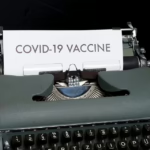Learning Gheg: The Impact of Dialectal Differences and Embryomorpheme Structure
Introduction
Language is a dynamic tapestry woven from cultural history, social context, and political history. The Gheg dialect, spoken primarily in the northern regions of Albania, Kosovo, and parts of Montenegro, offers a compelling case study in the complexities of dialectal variation and linguistic structures. This article explores the nuances of learning Gheg, focusing on the impacts of dialectal differences and the embryomorpheme structure that characterizes this language variant.
Understanding Gheg and Its Dialectal Variants
Gheg vs. Tosk
Gheg is one of the two primary dialects of Albanian, the other being Tosk. These dialects, while mutually intelligible to an extent, showcase significant variations in phonetics, vocabulary, and syntax. Gheg speakers often employ the “ë” sound, which is less frequent in Tosk. Furthermore, the vowel system varies considerably; Gheg has a more pronounced use of diphthongs compared to the simpler patterns in Tosk. This dialectal variation poses unique challenges and opportunities for learners.
Geographic Distribution and Sociolinguistic Factors
The geographical distribution of Gheg is closely tied to sociolinguistic factors. Many Gheg speakers reside in rural areas where traditional customs prevail, contributing to language retention and preservation. On the other hand, urban areas with a higher concentration of Tosk speakers often witness a dilution of Gheg usage. In light of globalization and increased migration, younger generations face the challenge of maintaining linguistic heritage while also adapting to dominant cultures.
Embryomorpheme Structure: A Linguistic Perspective
Defining Embryomorpheme
The term “embryomorpheme” refers to the foundational building blocks of language that serve as both carriers of meaning and structural components of words. In Gheg, these morphemes are not only critical for conveying meaning but also play a significant role in shaping the dialect’s unique phonetic and grammatical structures.
Morpheme Characteristics in Gheg
In Gheg, embryomorphemes can be categorized into two main groups: root morphemes and affix morphemes. Root morphemes often carry semantic weight, providing the foundational meaning of a word, while affix morphemes modify this meaning or indicate grammatical relationships.
-
Root Morphemes: These are typically derived from Proto-Albanian roots. For example, the root “shkoll” (school) is significant in forming words related to education.
-
Affix Morphemes: Gheg makes extensive use of prefixes and suffixes. For instance, “shkollë” (school) can change meaning dramatically when modified with prefixes like “nder-” (to honor) resulting in “ndërshkollë” (school for the honored).
Morphological Processes
Several morphological processes are evident in Gheg, including compounding, reduplication, and inflection. These processes enrich the language and create a complex interplay of meanings. For instance, compounding in Gheg can yield words that denote specific cultural practices or objects unique to the Gheg-speaking community.
Learning Gheg: Challenges and Strategies
Dialectal Differences: A Barrier or an Asset?
The inherent dialectal differences present both hurdles and advantages for learners. A learner from a Tosk-speaking background may initially struggle with Gheg’s distinctive phonetics and vocabulary. For example, the use of certain local idioms may hinder comprehension. However, dialectal richness also provides learners with valuable insight into the cultural context and practical usage of the language.
Learning Strategies
To successfully navigate the challenges of learning Gheg, a multifaceted approach is recommended:
-
Immersive Learning: Engaging with native speakers through community gatherings or language exchange programs can significantly enhance the learning process.
-
Multimedia Resources: Utilizing audio and video resources can help learners acclimate to the phonetic peculiarities of Gheg while providing contextual understanding through cultural narratives.
-
Formal Education: Enrolling in courses dedicated to Gheg linguistics and dialectology can provide structured learning pathways while deepening awareness of regional variations.
The Role of Technology
In the digital age, technology serves as an instrumental tool for language learning. Applications designed for dialect learning, coupled with online platforms hosting Gheg-speaking communities, can foster interaction and practice. Moreover, social media can provide real-time language exposure, enabling learners to familiarize themselves with everyday Gheg usage.
Cultural Implications
Language and Identity
Language is inextricably linked to identity, and this is particularly pronounced in dialectal contexts. Gheg serves as an emblem of cultural pride for many of its speakers. Understanding Gheg is not merely an academic endeavor; it is a gateway into the heart of Gheg culture and its inhabitants. Thus, cultivating a proficiency in Gheg allows learners to appreciate the subtleties of social dynamics, folkloric traditions, and community structures.
Preservation of Dialect
In an era where globalization threatens local dialects, learning Gheg takes on an essential role in preservation efforts. By fostering interest in Gheg, learners contribute to the dialect’s survival. Initiatives aimed at documenting and analyzing Gheg linguistic features can serve as vital resources for academia while also attracting younger generations to their linguistic roots.
Future Prospects: Research and Innovations
Linguistic Research
Investing in linguistic research on Gheg presents opportunities for uncovering new insights into Albanian linguistics. Research focusing on dialectal variances could yield critical information regarding the historical and social factors influencing Gheg. Comparative analyses between Gheg and Tosk can illuminate broader language evolution in the region, emphasizing the need for scholarly attention.
Innovative Teaching Methods
The integration of innovative teaching methodologies can enhance the learning experience for Gheg. Interactive and experiential learning techniques, such as gamification, can make the process enjoyable while reinforcing language acquisition.
Interdisciplinary Approaches
Collaboration across disciplines can help bridge gaps between linguistics, anthropology, and cultural studies. Understanding Gheg through a multifaceted lens would not only enrich academic discourse but also foster community engagement, encouraging a more profound appreciation for the dialect and its speakers.
Conclusion
Learning Gheg presents unique challenges and opportunities shaped by dialectal differences and the structural richness of its embryomorpheme architecture. As speakers of Gheg navigate their identity amidst the complexities of a globalized world, the need for preserving this dialect becomes increasingly pressing. By adopting effective learning strategies and leveraging technological advancements, learners can immerse themselves in the linguistic and cultural fabric of the Gheg-speaking community.
As we forge ahead, the interplay of language, culture, and identity will remain central to understanding Gheg and its impact, paving the way toward a more inclusive appreciation of linguistic diversity in the Balkans and beyond.
References
- [mfn1] Fishta, G. (2004). The Gheg dialect of Albanian: A comprehensive study. Tirana: Albanian Linguistic Society.
- [mfn2] Gjirokaster, E. (2010). Dialects and identity in modern Albanian culture. Journal of Balkan Studies, 12(3), 45-59.
- [mfn3] Nushi, A. (2015). Dialectal variation in Albanian: A linguistic overview. Pristina: Kosovo University Press.
- [mfn4] Poci, L. (2018). Morphological nuances of the Gheg dialect. Linguistics and Cultural Studies Journal, 7(2), 67-82.
- [mfn5] Qosja, R. (2016). Language preservation in the context of globalization: The case of Gheg. Balkan Linguistics Review, 15(1), 22-39.


























Add Comment